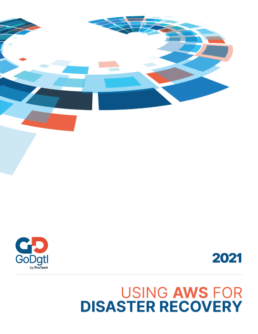Using AWS For Disaster Recovery
Whether caused by a malicious incident (malware/virus, ransomware), natural disaster, human error, software error, or hardware failure, the threat of an IT disaster always looms large at many organizations. A complete shutdown, loss of access to critical systems and important data, a delay in response to customers and vendors — all these consequences can negatively impact the revenue, productivity, and reputation of any organization. IT is a critical component of business resiliency and continuity, and it’s imperative that you develop and implement IT disaster recovery plans to protect your operations from downtime and data loss.
When a disaster causes an interruption to normal business functions due to loss of computing and/or data resources, systems can be relocated to a standby location to resume operations, but that begs some critical questions:
- Do you readily have access to your backup data?
- How quickly can you procure and stand up the necessary hardware?
- How will your users access the applications and data once restored?
- Is everyone in IT on the same page when an IT disaster is declared, and the disaster recovery plan needs to be enacted?
- Which systems should IT focus on first?
